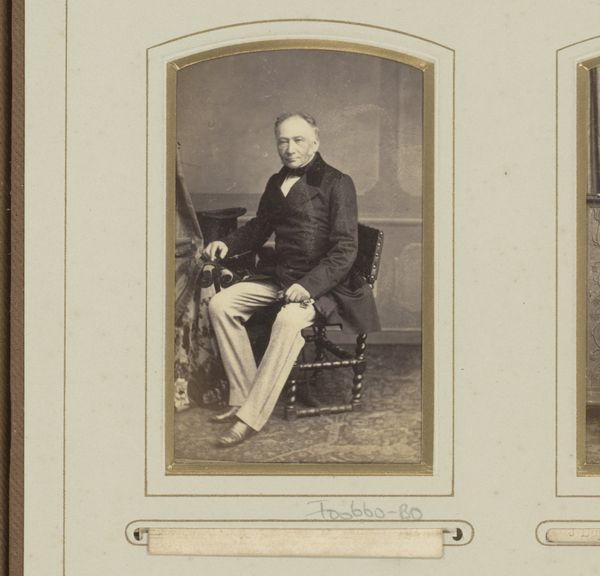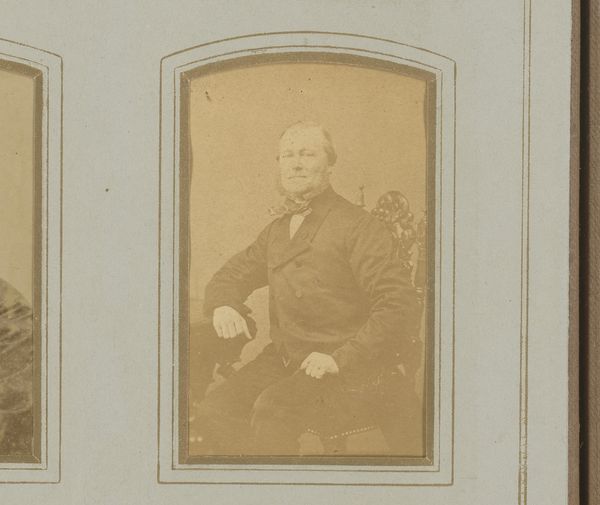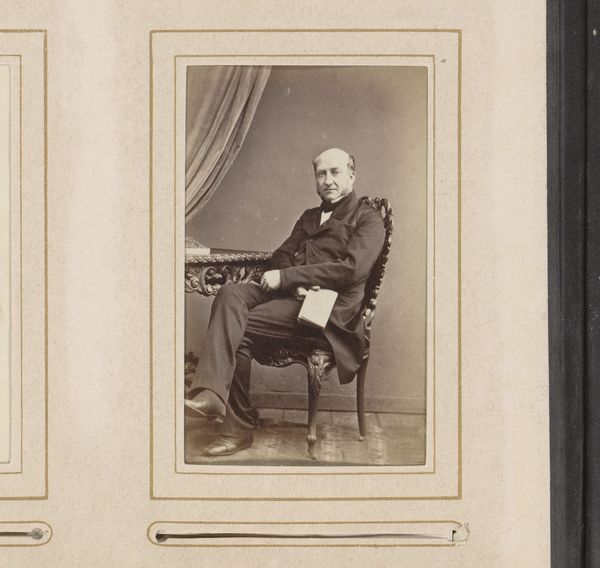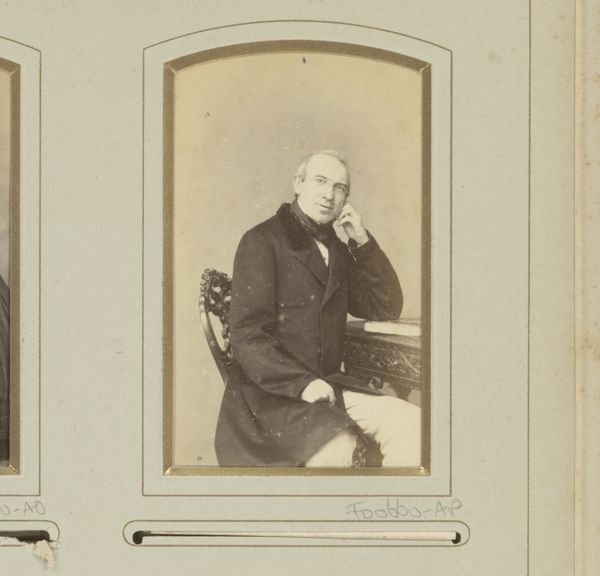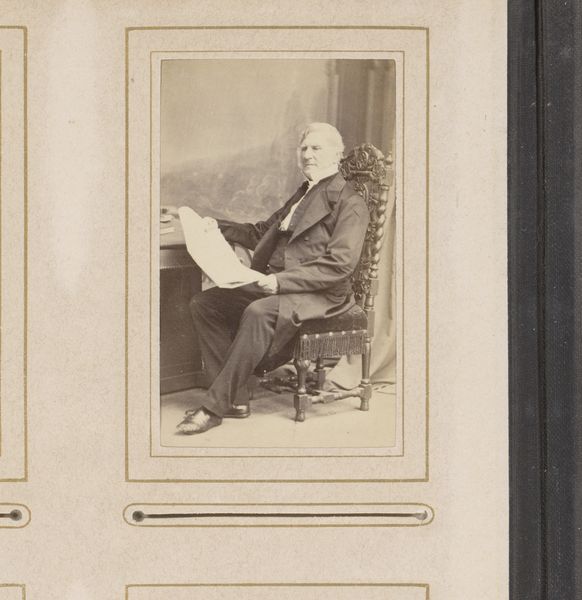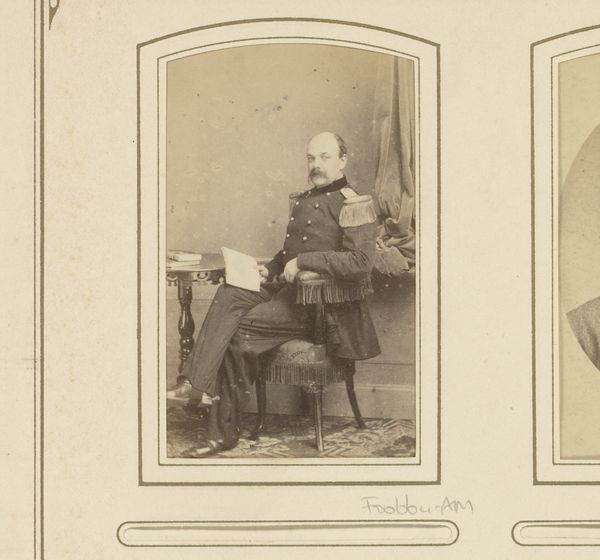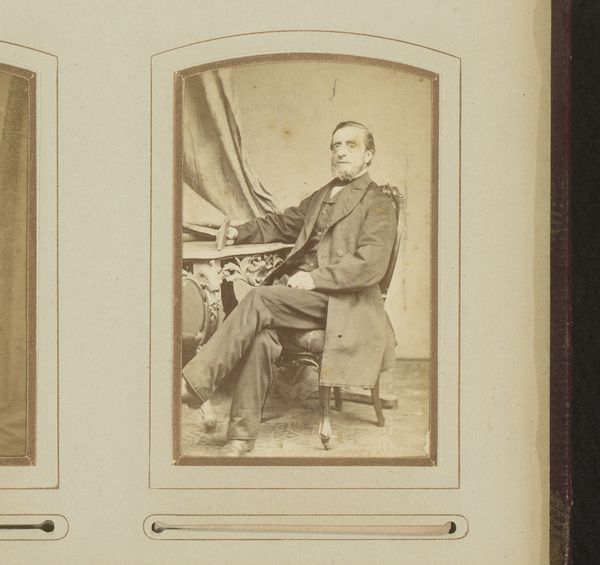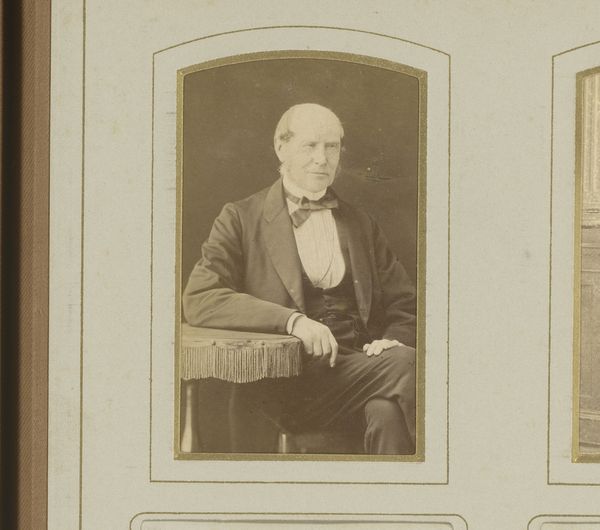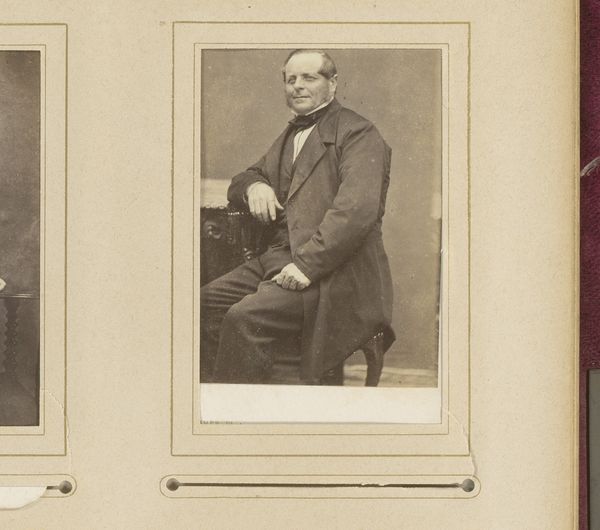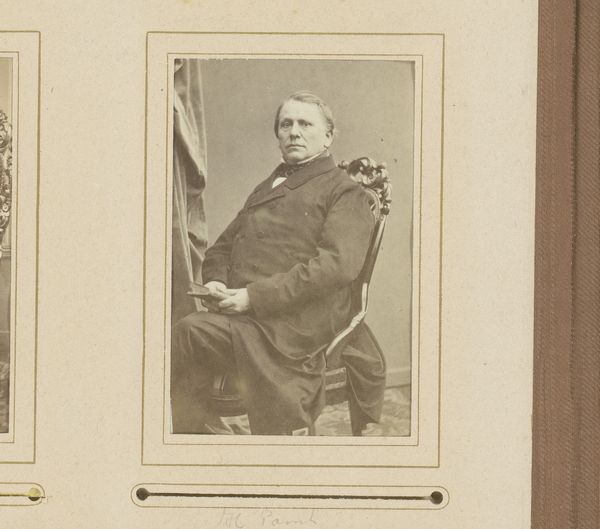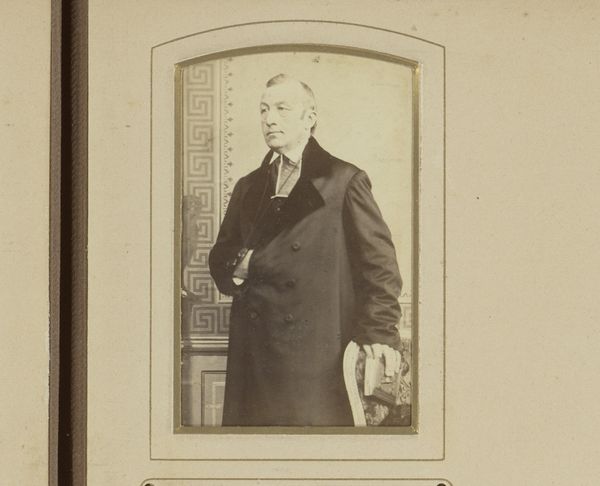
photography
#
portrait
#
charcoal drawing
#
photography
#
historical photography
#
19th century
Dimensions: height 83 mm, width 51 mm
Copyright: Rijks Museum: Open Domain
Editor: This is a photographic portrait of a seated man, taken sometime between 1867 and 1901 by Arnold Nelius Marinus Johannes Fock. I'm struck by how formal and posed it feels. What can you tell me about the context surrounding portrait photography at this time? Curator: The late 19th century saw the rise of photography as a powerful tool for social representation. It democratized portraiture, making it accessible to a wider public beyond the elite who could afford painted portraits. Think about how this impacted notions of identity and status. In what ways might a portrait like this, given its inherent realism, have shaped public perception? Editor: It feels like the photographer aimed to portray respectability. The sitter is formally dressed, with that stern look that’s so common in older photos. Did the sitter have any influence on this process? Curator: Absolutely. Patrons of photographic studios wanted control over their image and to be viewed favorably in the eyes of others. His pose and the setting -- the ornate chair, the small table, the book resting on it, all carefully arranged -- suggests an intentional effort to convey the sitter’s intellectual and social standing. Were photos like this for public display, do you think, or perhaps private collection? Editor: Probably private. I guess this was his way of communicating how he saw himself, and preserving it for posterity. But how objective is that kind of portrait, then? Curator: That's a great question! We must always be aware of photography's potential biases. Examining photos like this in light of social and political context gives us a glimpse of these constructions, and how meaning can change over time. Editor: I hadn’t considered all of the performative elements at play! It changes the way I think about even casual snapshots today. Curator: Indeed. The history of photography constantly reminds us that images, however "real," are always shaped by the culture that creates and consumes them.
Comments
No comments
Be the first to comment and join the conversation on the ultimate creative platform.

